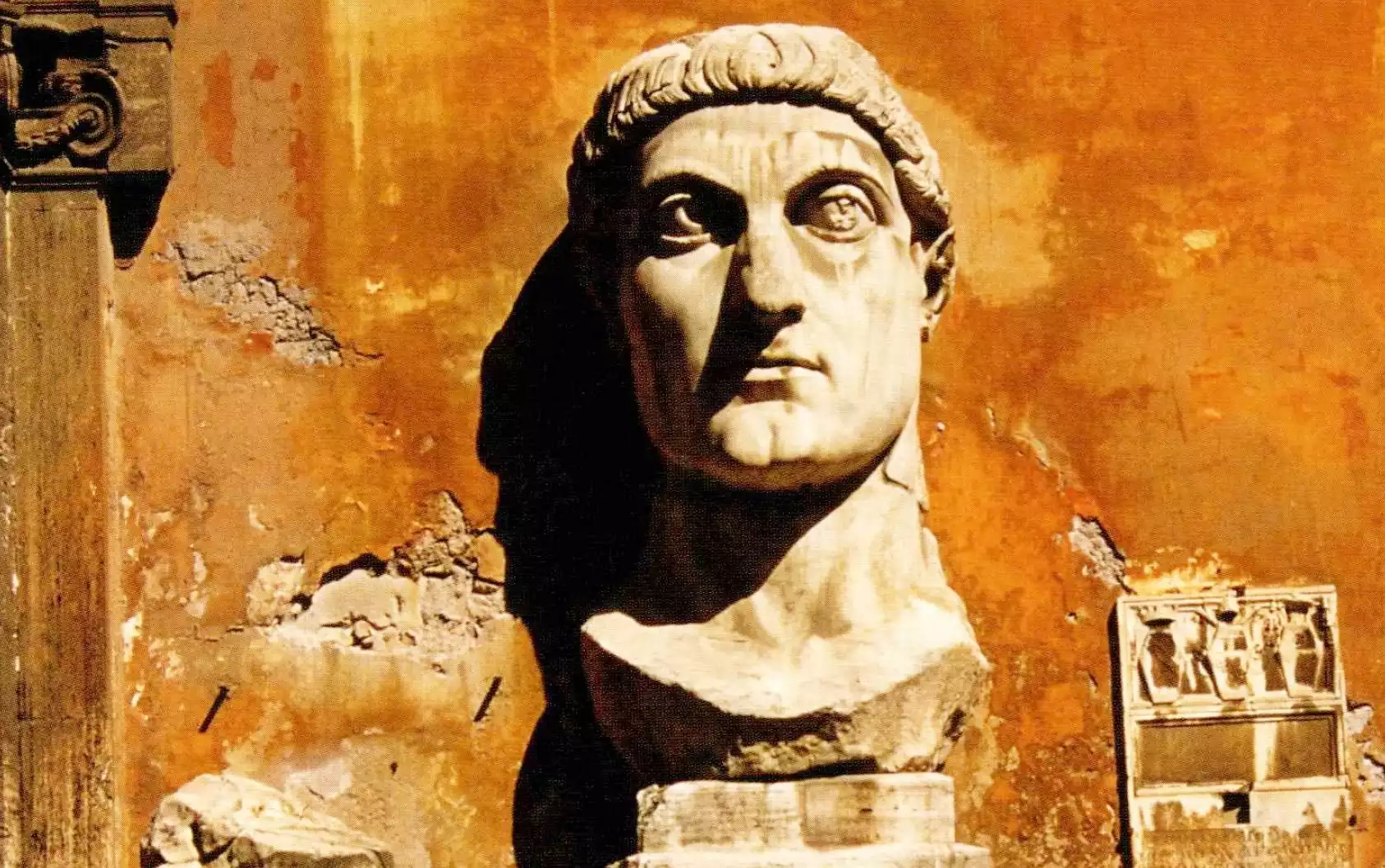
The conversion of Constantine after his victorious vision of the cross marked a pivotal moment for Christianity. His patronage brought the faith into the social mainstream and laid the foundations of the Byzantine Church.
The ‘Publication’ of Christian Scripture
The emergence of the codex, or modern book form, played a pivotal role in the spread of Christianity in the 4th century CE. While scrolls remained the dominant format for literary works in antiquity, early Christians favored the affordable and portable codex. These crude codices, often just a gathering of papyrus sheets, allowed small communities to access and cross-reference key texts during persecution.
Yet as Christianity moved into the mainstream under Constantine, the codex was transformed. No longer a humble “manual of faith,” ornate pandects containing the complete biblical canon emerged as symbols of scriptural unity—albeit rare and costly ones. Constantine himself requested Bishop Eusebius prepare copies of sacred texts for the new churches under construction. The codex had stepped onto the stage, ready to be adorned as lavishly as the new basilicas and cathedrals arising across Christendom.
Even Gnostic sects, which syncretized various traditions into heterodox beliefs, began decorating their codices with potent symbols like the crux ansata. This Egyptian ankh, symbolizing life, was perpetuated not only by Gnostics but also early Christians who endowed it with new meaning. As the codex moved into opulent realms under imperial patronage, the cross too would soon eclipse all other images, evolving into the ultimate emblem of Byzantine faith thanks to royal standard-bearers like Constantine.
Foundations of the Byzantine Church
Constantine aimed to unify his vast domain under a single faith. Beyond standardizing rituals and canon, he convened the first ecumenical councils like Nicaea to codify orthodoxy against heretical movements. In the process, several independent regional churches emerged upholding alternate traditions – Syriac, Armenian, Coptic. Each reinforced its identity through distinct languages, scripts and art (see Chapter 4).
Constantine also dispatched his mother Helena to tour holy sites and lend them imperial credibility. Local guides directed her to spots associated with Christ’s life, where she uncovered relics like the True Cross. Its finding shifted the cross from an ignominious symbol into the ultimate emblem of faith. The Church of the Holy Sepulchre soon enclosed the sites of Crucifixion and Entombment, while churches arose across Constantine’s realm – St. Peter’s in Rome, the Nea in Jerusalem, and eventually the splendid Hagia Sophia in Constantinople.
Beyond standardizing doctrine and elevating symbols, Constantine introduced a new language of power – one linking church and state through lavish patronage. Eusebius portrayed him as an ideal Oecumenical, or universal, ruler chosen by God to spread the faith. While later centuries would expose tensions in this partnership, in the afterglow of persecution’s end the lines between spiritual and temporal seemed blessedly blurred.
The transformation of Christianity under Constantine would reverberate through the centuries. Though tensions between spiritual and temporal realms inevitably surfaced, the emperor’s patronage firmly established the faith within the social and cultural mainstream. His vision unified previously disparate strands while introducing the artistic language that would distinguish Byzantine aesthetics for nearly a millennium.
As the first Christian emperor, Constantine brought the faith out of persecution and into prominence. Through shrewd policy, he rendered Christianity palatable to the aristocracy and the masses alike. His sanction allowed ornate cathedrals to arise where modest domus ecclesiae once stood. Humble codices blossomed into splendid pandects under imperial sponsorship. Constantine even reshaped visual culture by elevating symbols like the chi rho and cross. Although the relationship between church and state proved complicated across Byzantine history, its foundations were laid through his transformative rule.
While later centuries exposed fissures in the Constantinian settlement, in the glow of persecution’s end, Christianity’s partnership with temporal power seemed blessed. The triumph of the cross presaged that of the emergent Byzantine Church itself.
References
Cormack, R., & Vassilaki, M. (2008). Byzantium, 330-1453. Royal Academy of Arts.
Cyril of Jerusalem, trans. 1969. “Lecture XIV.” In The Works of Saint Cyril of Jerusalem, vol. 1, p. 312. Fathers of the Church 64. Catholic University of America Press.
